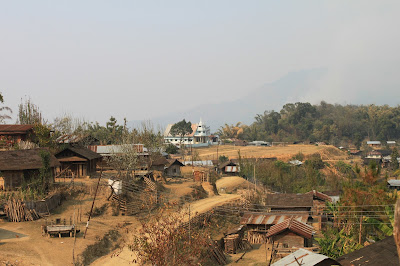Phuye - Interactions on CCA Mapping

We started with a film . This would keep boredom at bay for participants who had arrived on-time as also help lay a platform for further discussions. The film " A Hunter's Tale ", that I have facilitated screenings earlier too, held the participant's interest ~ Some of the participants then got on to identifying species in the field-guides. As we wondered on how Hoolock Gibbon and Hornbills were charismatic species from participant's perspective as well, it dawned on us that only the elders were then vocal! On asking the young participants we got to know that none of them had seen either Hoolock Gibbons ( Ashuai) or Hornbills ~ As the participants arrived we moved on to Prayer and Introduction by the Nanga Greener Zone (NGZ) Committee; Governing body of Community Conserved Area (CCA) that spans 14 Sema villages ~ Participants had questions for us as well as the Committee. These ranged from whether GPS units would be provided for each village ...





